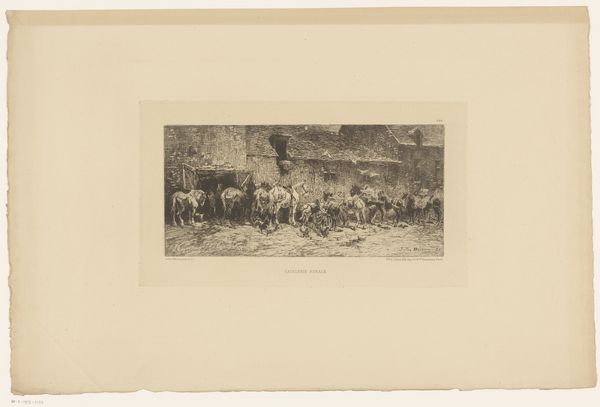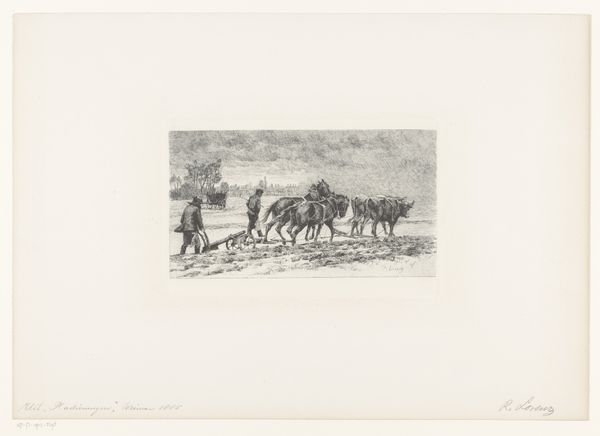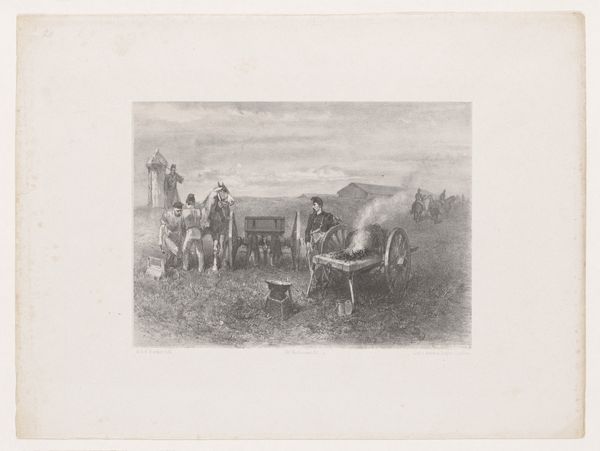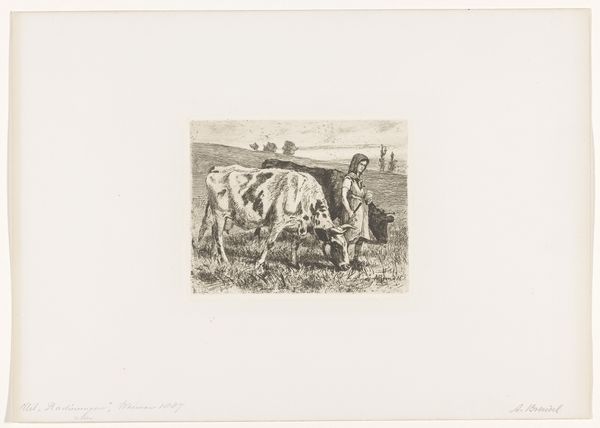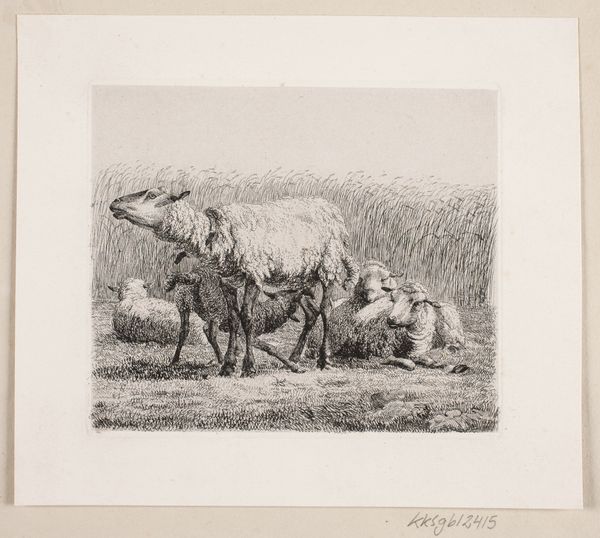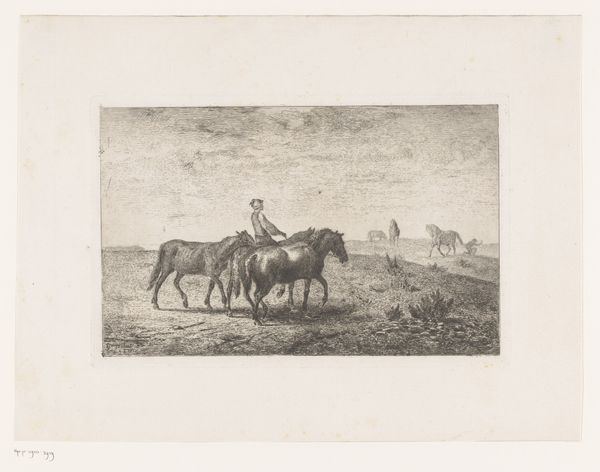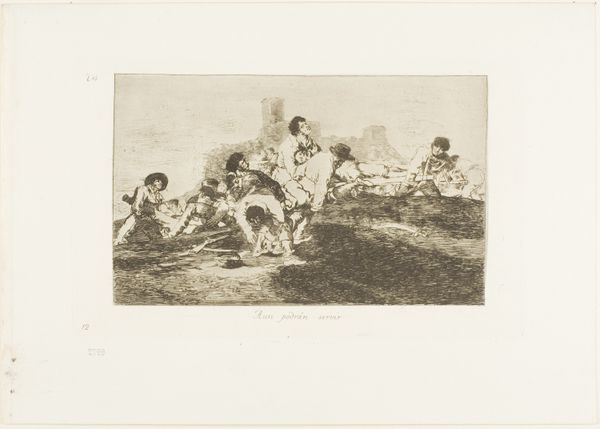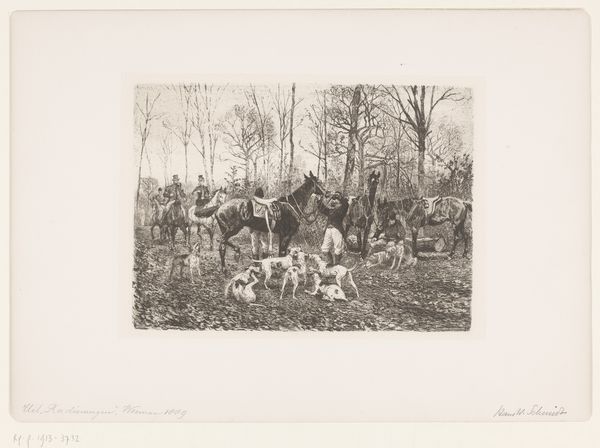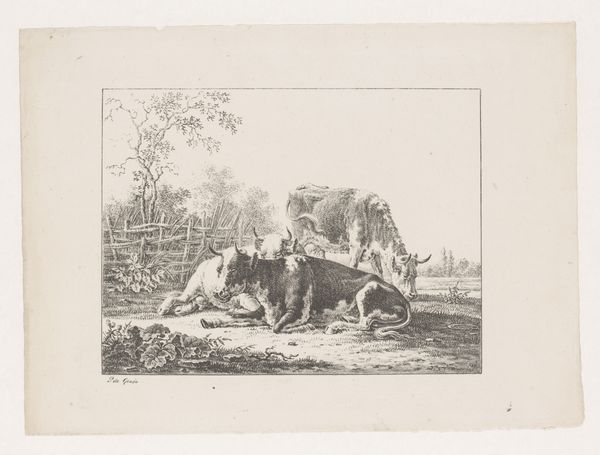
print, etching
# print
#
etching
#
landscape
#
genre-painting
#
realism
Dimensions: height 212 mm, width 370 mm
Copyright: Rijks Museum: Open Domain
Editor: Here we have Hans W. Schmidt’s 1887 etching, "Schaapherder", held at the Rijksmuseum. The tonal range is striking, creating an overall subdued and quiet mood. How do you read the composition? Curator: Note how Schmidt deploys etching to establish texture and spatial depth. See the arrangement of light and shadow and its influence on creating dimensionality; dark strokes form the figures of the sheep in the foreground, contrasting sharply with the distant pale horizon. We may observe a balance here, or perhaps tension, created through the use of asymmetry in light. Editor: The sheep really do appear to advance from the print, it’s wonderful! Can you tell me more about this tension between light and dark? Curator: Consider the distribution of visual weight. Notice that although the etcher renders the animals mostly in darkness, they are strategically placed to guide the eye from left to right, deeper into the background. This compositional choice—darkness against a brighter background—gives a palpable sense of recession into space, with depth constructed by a system of formal relationships. How do the lines interplay, directing the viewer's gaze? Editor: The lines seem to originate from a central focal point, then spreading out and converging towards the upper portion. How remarkable! Do you think the distribution is purposeful, or are there possibly imperfections to be noted? Curator: It appears that way, certainly, but bear in mind we may never grasp an artist’s full intent. And any alleged imperfections still form an integral and inextricable aspect of the completed image. However, studying the formal relationships helps me clarify my experience with this picture. Editor: I can see what you mean. Thinking about the composition and how it directs our eyes offers new insights into the work. Thanks so much! Curator: Indeed. Such study refines not just the artwork itself but also one's own critical capacity for apperception and understanding.
Comments
No comments
Be the first to comment and join the conversation on the ultimate creative platform.
